









Reference: LIV-ECOM-SERV-MARK-POS3H
Specialized in Prestashop SEO positioning service to exponentially increase the visibility, the organic traffic and the conversion rate of the ecommerce.
Avant-garde practices for SEO positioning in Prestashop focused on the creation of content that responds to search intentions in the phases prior to conversion and prioritizing excellence in usability and user experience (UX/UI).
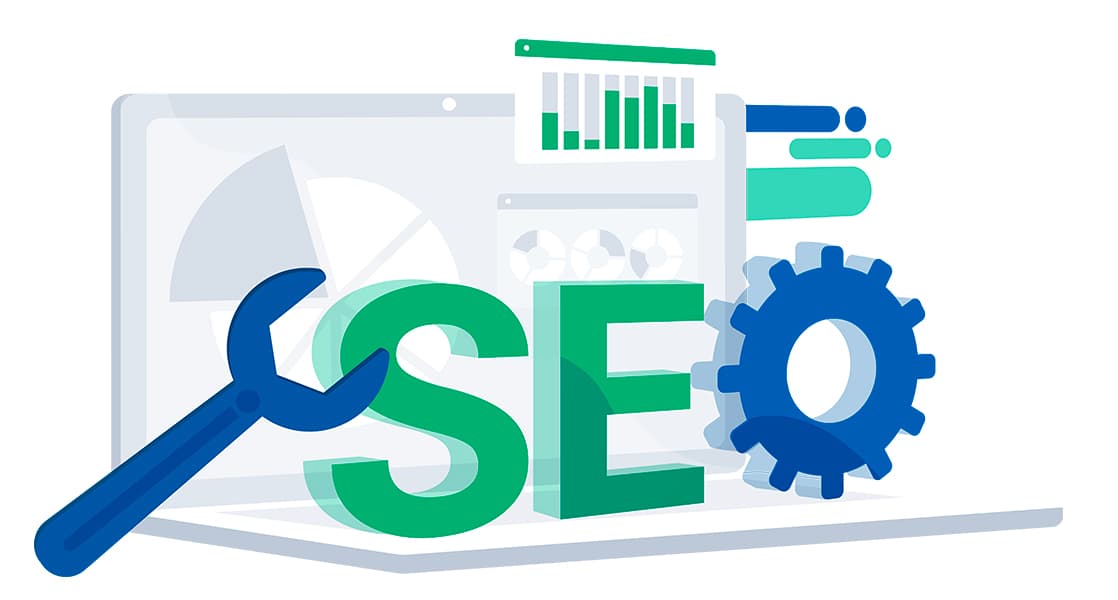
The cost estimate for the SEO Positioning Service for Prestashop is measured in hours of work. You can consult us through our Contact Form and communicate your requirements, in any case, the first thing we do to be able to intervene in your online shop, it is a diagnosis of the initial situation, which allows us to evaluate the particularities of your case.
We will respond as soon as possible with an estimate and a link to contract the number of hours required for the intervention. While placing the order, you can add any information you deem appropriate in the comments field. We will contact you whenever necessary throughout the process.
Keep informed at all times of the progress of the contracted service and follow up on the tasks carried out as they are completed from your Client Area in the "Service Status".
See all the details and contracting conditions for this service at the following link: Service and confidentiality agreement.
There is a whole terminology associated with the world of online searches and website traffic, for example… Did you know what Google SERPs are? What are keywords? Google Robots or Spiders? How to index a website in Google? What is the Crawl Budget?... if these terms are not familiar to you, we explain them below:
Search engines or search engines are systems that collect information that is stored on web servers. Basically, its job is for a client to enter a phrase or keyword, to return a list of links that answer the search carried out.
For many, to talk about online search is to talk about Google, but... Is there any other search engine used than Google?...
The main Information search engines that exist on the internet are Google, Bing, Baidu, Yahoo and Yandex. There is a large number of them with different characteristics, but these are the best known search engines. Google is by far the most used online search engine, covering more than 80% of the total quotas worldwide. This is why most of the strategies created for digital marketing revolve around improving the positioning for it.
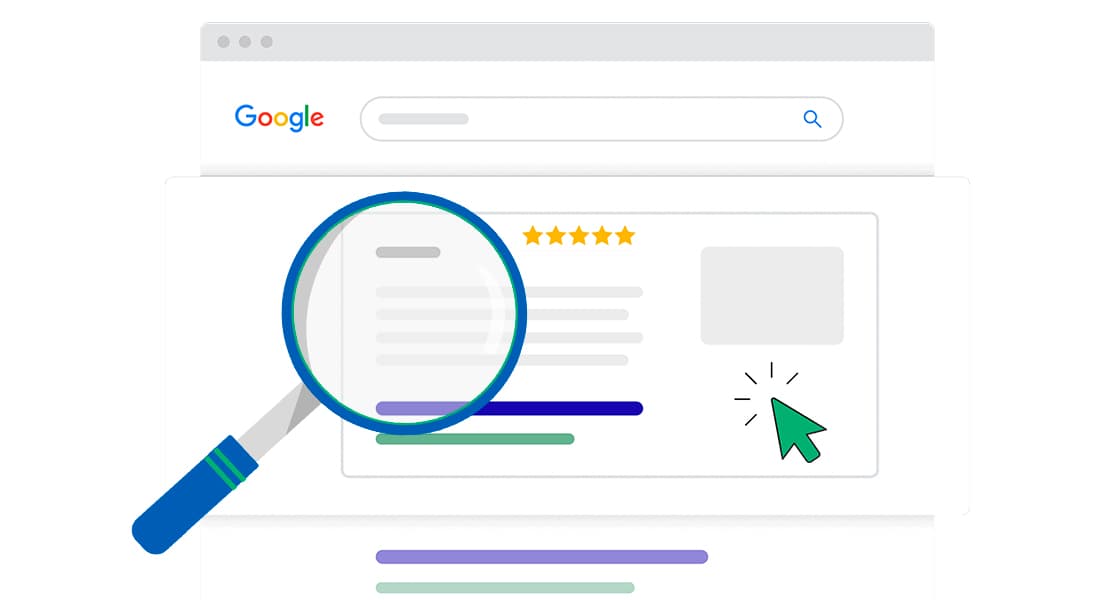
This term simply refers to the links obtained in the search results listings. Thus, if, for example, it is said that a website appears in the first position in the Google SERPs, this means that the first link, the one in the highest position or the one at the top of the list of results, points to it. website, whose content should contain a series of related keywords or keywords that have a semantic relationship with the search performed.
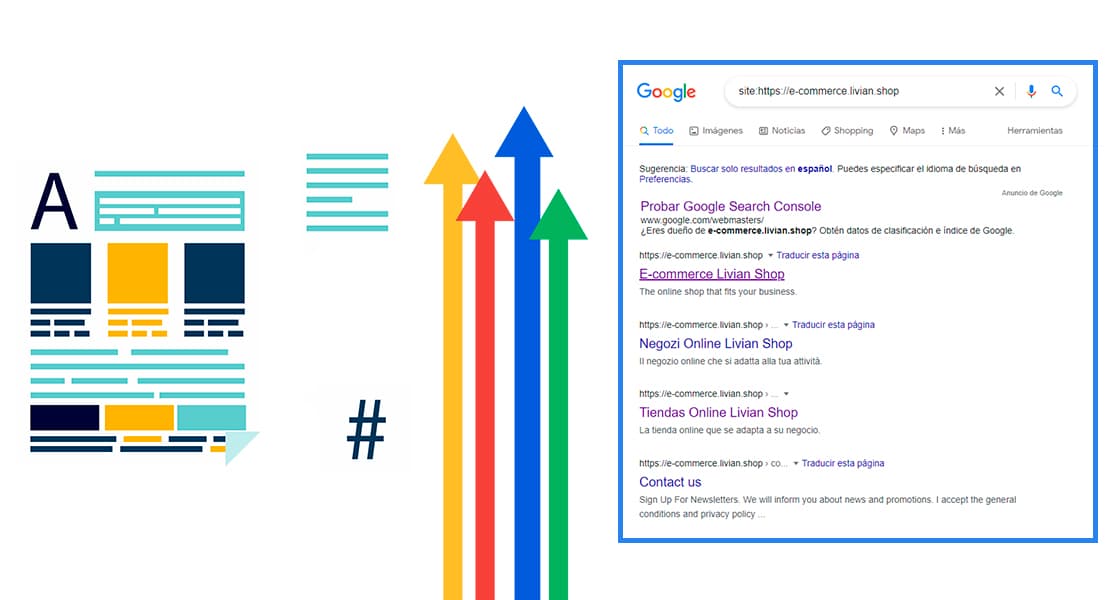
Among the functions of a search engine is to constantly explore and download the content found on the internet. In the case of Google, it is done through bots capable of simultaneously crawling various contents, such as spiders with many legs to move around and perform different tasks at the same time. The spiders move through the pages and "crawl" them, following their links.
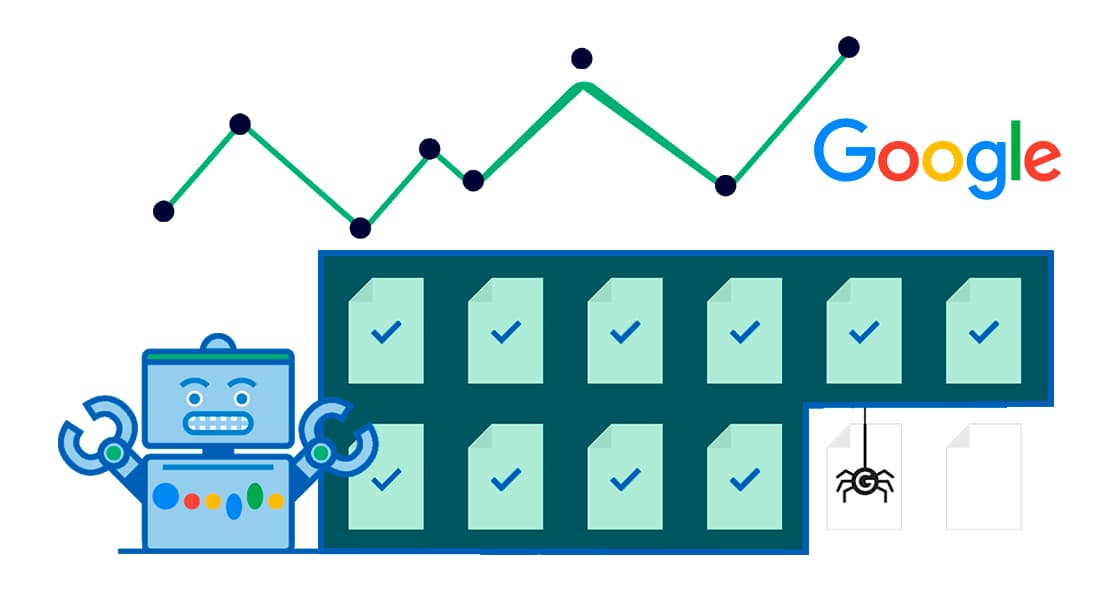
Web indexing refers to the post-crawl process, in which the content found is sent to Google's databases. The content obtained is organized by algorithms that determine the position in the SERPs of each Url, according to the keywords related to each search.
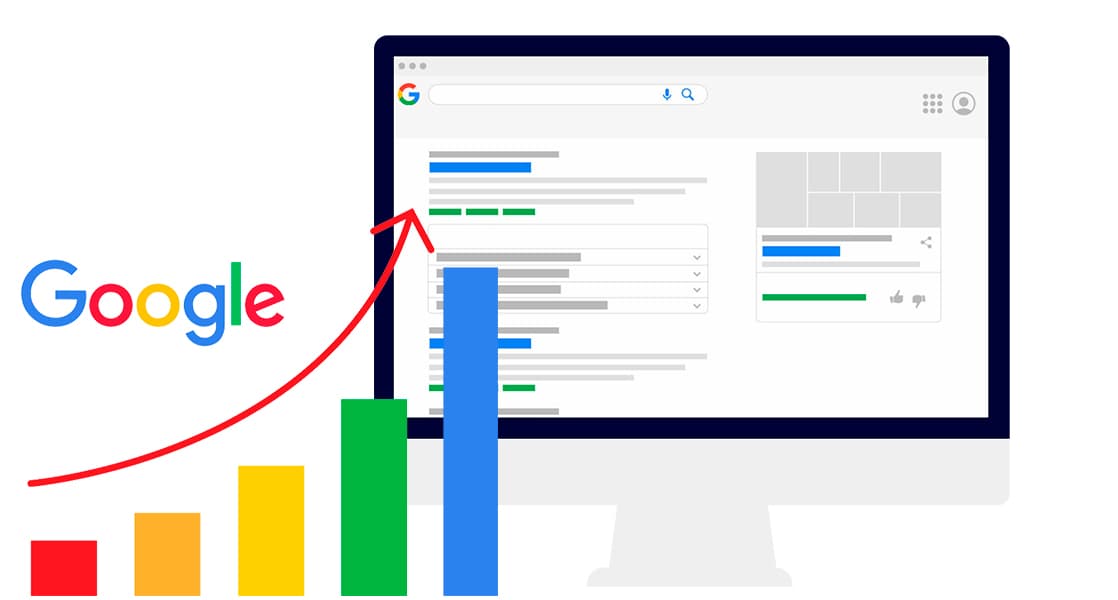
• So that the Spiders can visit the largest number of urls, Google establishes an estimated maximum time to perform the exploration in each place. The maximum time that Google spiders have available to crawl the website is known as "Crawl Budget". So not all websites will be fully crawled and indexed in the first instance.
• Sites with a less complex structure will complete crawling and indexing in less time, update frequently, and be indexed more easily.
• Websites must be optimized to take advantage of the Crawl Budget, guaranteeing that their content is always updated to improve or maintain their positioning. To achieve this, it will be necessary to structure the web page facilitating the path of the spiders so that they can scan the valuable content of the site.
The purpose of a website as a means of communication is to direct its content to an established public or audience. In an online shop, as a means of electronic commerce, it is about reaching a target, capturing new customers, retaining them and applying marketing strategies.
The traffic of a web page or an online shop is a measurement of the number of visits received over time and is a very important metric, because together with other factors, it can determine the degree of visibility of the site and offer statistics that can be used to create successful marketing strategies.
Using Google Analytics, you can obtain traffic data and statistics from your online shop. In the following link you can obtain information about the service related to this topic: Install Google Analytics In Prestashop.
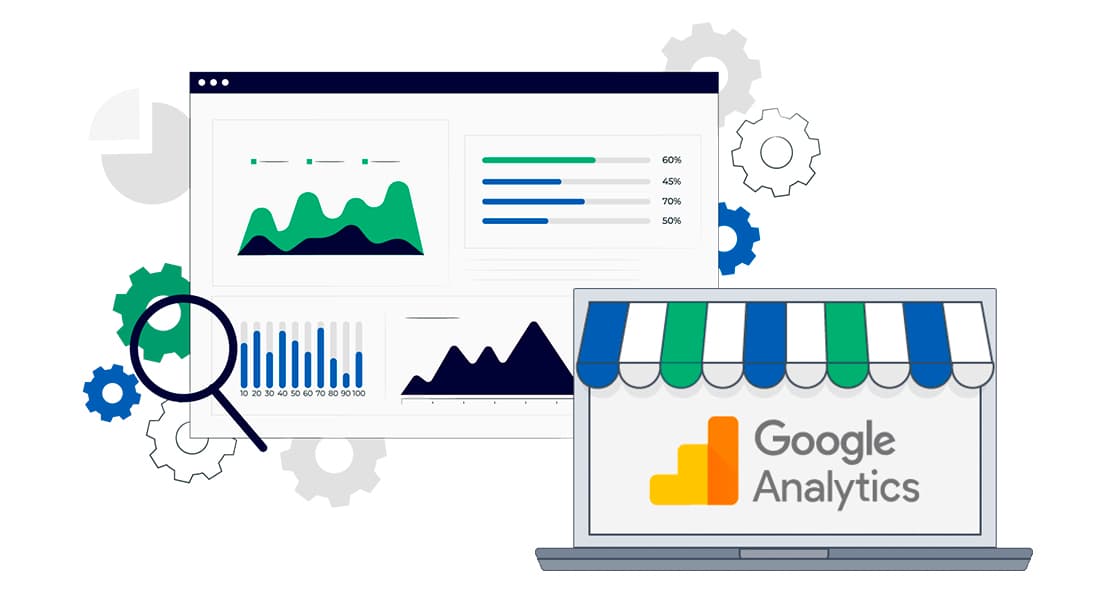
In the case of an ecommerce, such as an online shop developed with Prestashop, the more traffic you manage to direct, the more likely you are to attract new customers and make new sales, although it also depends on other factors such as whether visitors are inside of the target to which the products or services offered are directed or that the technical and design features oriented to usability and user experience (UX/UI) are correctly optimized, but .. How to generate web traffic? ... the answer is that traffic can come from different sources, but the first factor to consider in order to get traffic is visibility. Therefore, the objective is to appear in the search results in the first positions, since it has been demonstrated that they are effective in attracting visits.
In the following article, you can find our recommendations to improve the user experience in Prestashop: Usability and User Experience with WPO, an infallible ally for your online shop.
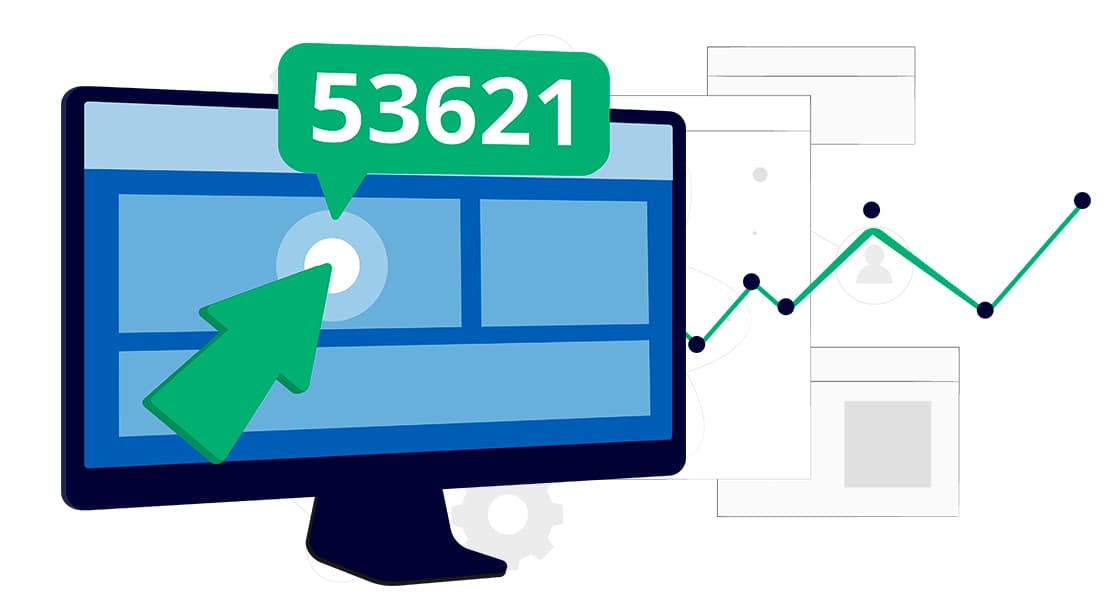
Another factor that influences the generation of traffic to a website is the volume of searches known from the history of a certain keyword (keyword), as these volumes are higher, it can be expected that the traffic directed by said searches will be higher and vice versa, the lower the search volume, the lower the traffic.

Usually, keywords with high search volumes and capable of attracting a lot of traffic are also often the most competitive, so their effective ability to generate website traffic will be compromised by competition in ranking .
Other less competitive “Long Tail” keywords could mean better opportunities to attract traffic and also traffic from visitors who perform more specific searches. These keywords are probably better focused on the product or service offered as they are more specific and better describe the search intention.
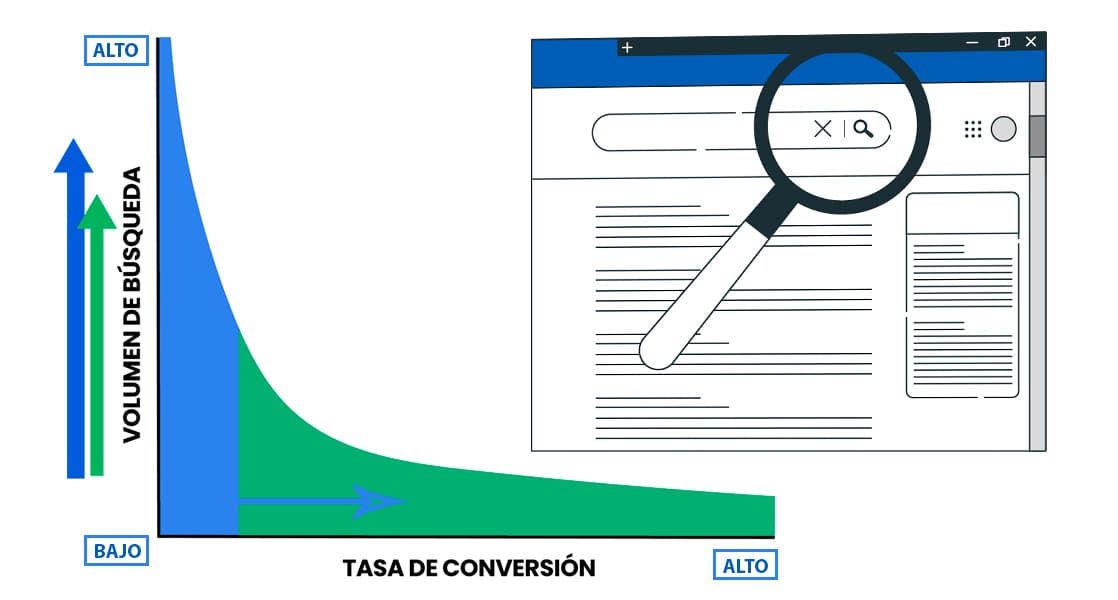
How to increase traffic on my website through SEO Positioning for Prestashop?
The answer is that web traffic from search engines is generated through the visibility granted by the positioning in the SERPs. This visibility will allow customers to select our link, among all those that appear in the list obtained. The web traffic of a page from search engines can be divided into two groups according to the way in which the positioning is obtained:
• It comes from contracting with the search engine, privileged positions for advertisements in the search results.
• It comes from obtaining the positioning, based on the implementation of the ranking algorithms developed by the search engine, to give relevance or reward certain content formats, which allow it to maintain its quality standards by verifying that users satisfy their search intentions and obtain the highest content quality together with the best usability and user experience.
• To generate more traffic, both organic and paid, it is necessary to apply SEO and SEM positioning techniques and in the specific case of Prestashop as a platform for ecommerce, to know and know how to apply these techniques, not only to generate traffic, but also to generate business.
Conversion is the concept used in marketing to refer to the fact that a certain action, previously defined, was carried out. To put it simply: once you have established an action that you want to perform and it is done, there is conversion. Generally, in e-commerce, when we talk about conversions, we refer to the sales made.
• Knowing the conversion rate is essential for any business, in an ecommerce, it is useless to attract a lot of traffic if it is not converting. This idea is what defines the conversion rate in digital marketing, a value that expresses the relationship between traffic and sales.
• The conversion rate indicates how many people were in contact with the business through ecommerce and carried out the established action.
• By taking actions to improve SEO positioning in Prestashop, the conversion rate will also improve, because customers who convert do so when they are offered the best user experience, without setbacks and through searches that end up offering products or services according to the search intention. In addition, search engine ranking algorithms evaluate technical requirements that are increasingly oriented to the customer's point of view, their satisfaction and comfort, thus rewarding those pages in which visitors enter and maintain interest with better positions. for longer, with good usability on mobile and desktop devices and no waiting times, pages that load fast, with a structure of linking and intuitive categories for navigation and most importantly, that offer valuable content, that provides relevant and quality information.

• There must be only one H1 tag to contain the title of each page.
• You must fill in the meta title and meta description (snippet) fields to be displayed in the search results. In addition, the H1 title text should not be the same as the meta title.
• Headings H2, H3, H4, ...etc will have to appear in an orderly manner and according to their hierarchy.
• The content must pass the tests of legibility or easy reading, of semantic associations and other tests applied by Google's algorithms.
• There should be no duplicate content, it applies both internally (within the same website) and externally, so to ensure that everything is correct in this regard, tools will have to be used to check it.
• The same keyword used cannot exceed a certain density, that is, it cannot be repeated in an exaggerated way, because it could cause what is known as keyword stuffing and become a penalty for Google's Panda algorithm, as it is considered like spam. In addition, the same target phrase should not be used for different content within the same site, to avoid cannibalization.
Parameters in URLs cause problems for SEO, produce duplicate content, waste the Crawl Budget and dilute possibilities for improvement in positioning. In addition, friendly urls add meaning to the content and are easier to remember, so their use is essential to improve the user experience.
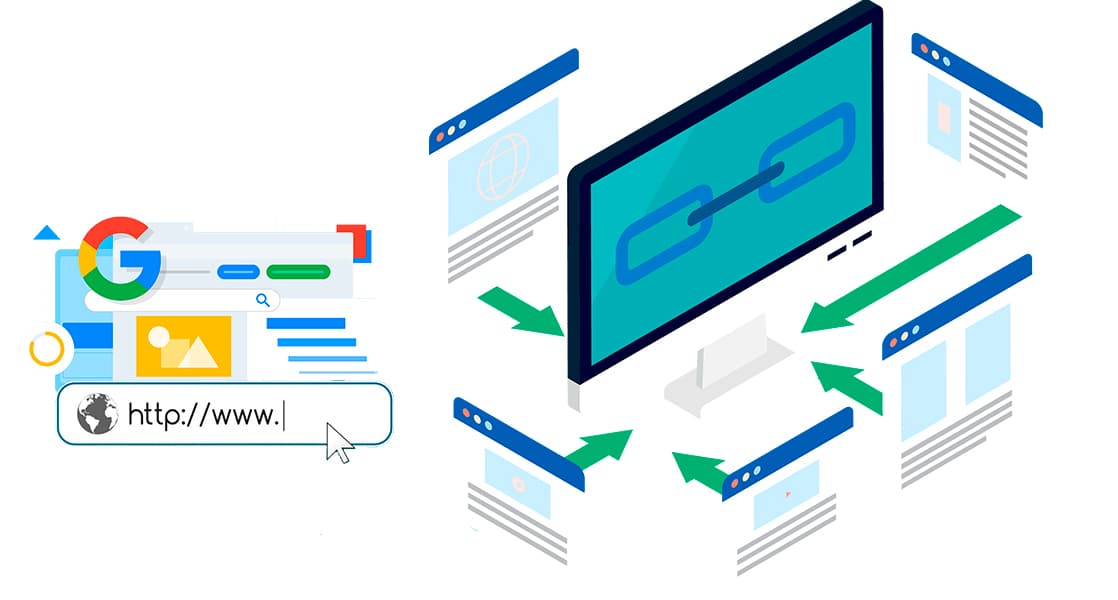
Using these algorithms, Google crawls for content that doesn't meet standards and uses bad ranking practices or black hat. The sites that incur in this, can obtain a penalty in their positioning and can be warned of their definitive removal from the index. The Penguin Algorithm is more recent and its function is similar to that of the Panda, but with additional functions in the detection of fraudulent or purchased backlinks, with content that is not related to the site they point to.
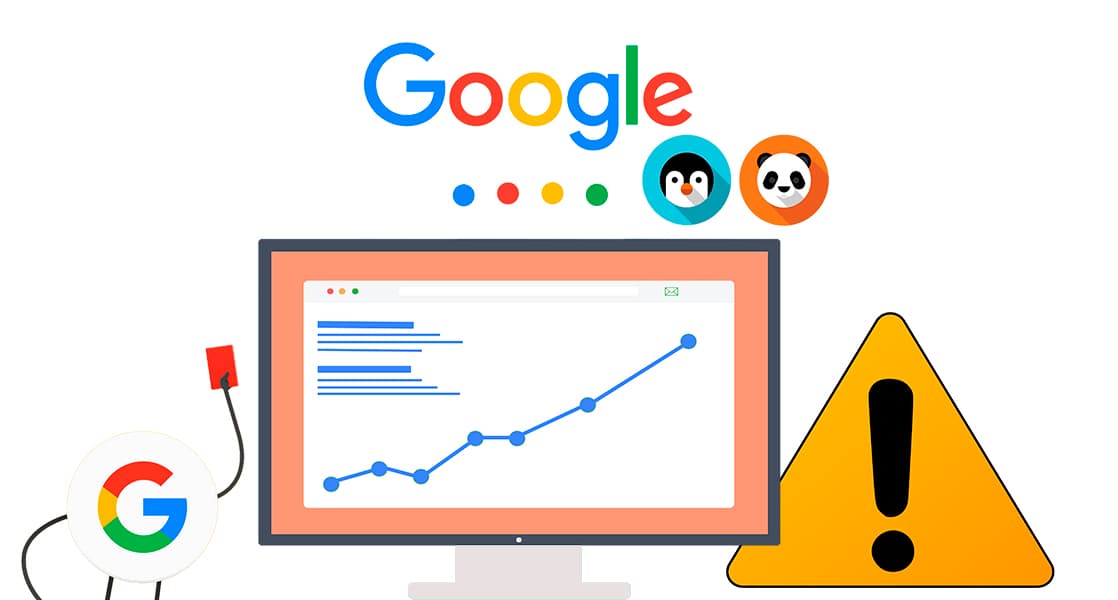
Another key aspect taken into account by Google is the loading speed of the site, giving a competitive advantage to those that achieve sufficient features so that users can navigate without having to expose themselves to long waits while browsing.
In addition, it will be the same customers who leave the site, who are responsible for influencing the loss of positions in the ranking, if the page does not have good loading times or said loading is not done in a stable way. and keeping the elements fixed on the screen. In terms of promoting improvements in the SEO positioning in Prestashop, several techniques can be applied for Performance Optimization (WPO) that improve the performance of the site, but having an appropriate hosting and in accordance with the resources that are required, is essential, especially if it is a professional ecommerce, like a shop made with Prestashop.
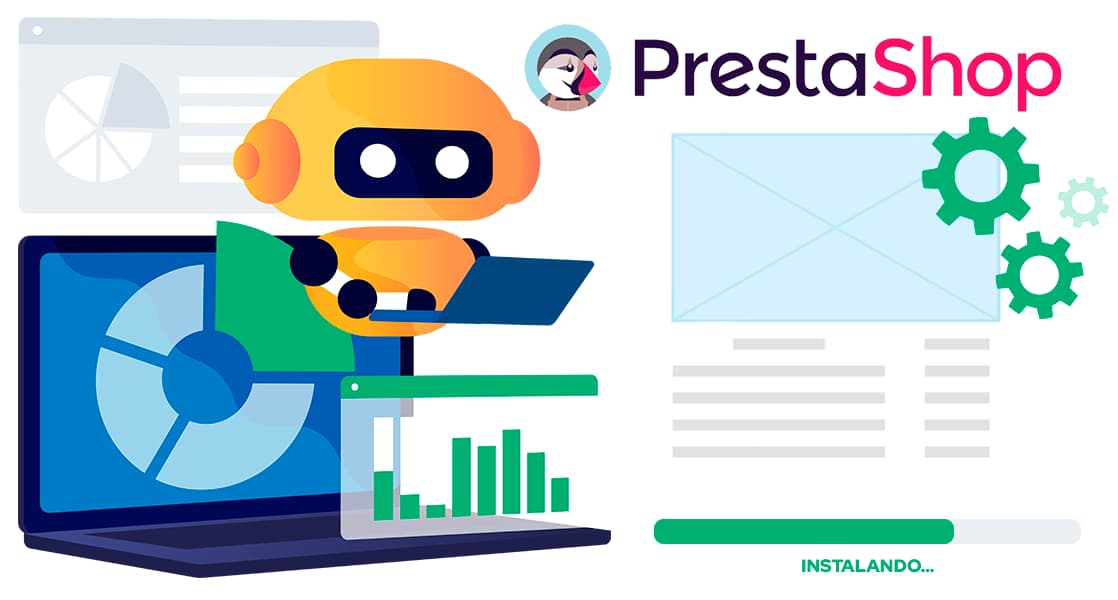
• Positioning (SEO), for its acronym in English: “Search Engine Optimization” is the discipline that deals with Search Engine Optimization, using a series of techniques to generate organic traffic on a web page.
• On the other hand, Search Engine Marketing (SEM), is characterized by offering short-term results, generating paid traffic. Ideally, SEM should be complemented with SEO, because regardless of the way in which positioning is obtained, customers access the website with certain search intentions, which, if not satisfied, could negatively affect both the return on investment in the campaigns, such as the quality of the user experience.
• A sitemap file is a list of pages of a website, to be consulted by search engines and users. Sitemaps represent an advantage in SEO positioning by ensuring that each page of the site can be found and indexed and removed or left unindexed if required.
• Search engines can analyze the status of tracking, positioning, usability on mobile devices, page structure, performance, warnings and errors found. The purpose is to keep website owners informed about any recommendation or anomaly that may be of interest to resolve.
• In Spanish, the Google Search Console is an indexing management tool. In this case, it is a Google tool, but other search engines also make their own tools available. For example, Bing's search and indexing tool is called "Bing Web Master Tools".
• Through these tools, the owner of a domain will verify its ownership to obtain the data generated. If you want to know... How to submit a Sitemap to Search Console? ... You can easily register it, with a couple of clicks, by adding the file path in the menu section called “Sitemaps”.
• In general, the sitemap crawl will be done periodically and automatically. Through the Google Search Console tracking data, you can obtain a list of all the keywords used in the search engine and for which the website has appeared in the search results, which will allow you to track the ranking of each term, in addition to keep the owner of the site informed in real time about the possible incidents detected, send him notifications and allow him to generate reports that make it easier for him to take timely actions in the event of any incident and corrective actions are taken in the shortest time, which ends up influencing a better experience for the visiting user.
• Based on the above, it could happen that in the Robots.txt file, which is a file that is basically used to allow or block Robots' access to tracking certain urls, a url is blocked that at the same time it is available in the sitemap, so since it is indexed, it can no longer be crawled, which generates an error message due to the conflict "sitemap vs robots.txt" that must be corrected.
We have a service related to this subject, follow the following link to obtain more information: Search Engine Indexing Service.

To start working on the SEO of an ecommerce, it is best to do a general study of the project and its current status, as well as estimate and plan the time needed to make the corrections and adjustments considered in the analysis. . A report must be created with a diagnosis that allows knowing the time, the type of service to contract and the resources necessary to complete the tasks projected in the planning. SEO positioning is multidisciplinary, it covers several areas of knowledge, so some of the services will require specialized personnel in support, development, design, layout, SEO-oriented writing, digital marketing, etc. For this reason, in order to meet objectives, it is important to carry out a diagnosis and planning that allows us to have a general idea of the road ahead.
Studying the competition means obtaining search intentions that cover the competitors and using tools that allow data to be extracted from the best positioned content. This will allow you to find visibility opportunities in a short time and start getting quality traffic with searches that lead directly to recording conversions.
When you have enough information about the competition, opportunities, strengths, weaknesses and action plans, a strategy aimed at achieving the objectives will be presented. The actions to be carried out to achieve these objectives will achieve competitive advantages that end up positioning in the first search results.
The Keywords or Keywords are the terms used by Internet users to perform searches. They can be classified according to the number of words they contain as "Head Tail" terms, generally composed of one or two words, and "Long Tail" terms, which generally include 3 or more words.
Furthermore, according to the search intent implicit in the term, they can be classified into three main types:
Informational Keywords
They are used to obtain definitions and concepts related to a particular topic or theme. In general, they are "Head Tail" keywords and are related to high search volumes, although they can also be "Long Tail" or long tail.
Business Research Keywords
They are used to find information about the options available to hire or select from a range of possibilities, certain products or services.
Transactional Keywords
They express a clear intention to purchase or hire a specific product or service. They are usually very specific or "long tail" and are normally related to low search volumes.
Value, quality and correlated content
Google algorithms use advances in Artificial Intelligence to detect quality content that manages to satisfy the greatest number of search intentions, granting authority in a specific area, to those websites that offer vast and meticulous content, semantically related and that revolve around a central topic or theme. Google's Hummingbird algorithm analyzes the behavior of users when performing searches and the different types of results they expect to obtain, focusing on the semantic relationships of searches, which must be taken into account by any website that wishes to improve the experience of the user.
In ecommerce, the content will generally be oriented to describe the characteristics and benefits of the products and to use techniques that help visitors create the needs that they can satisfy through conversion. Said contents will be inserted in the main page, categories and product listings, product detail pages, promotional pages for campaigns or seasons, promotions for commercial dates, news and events, taking into account the point of the structure of the website in which each one is found, to satisfy different search intentions, in accordance with the way in which the site has been structured or its architecture.
For example, the content of the category pages that include a set of products, will cover a broader spectrum of searches, less specific, more competitive or with greater difficulty of positioning, or also called "Head Tail" or search queries. short tail and as you go deeper into the tree of links that structure the site, you will be able to find more detailed descriptions about very specific products or services and that respond to more defined searches or "Long Tail" searches, long tail, which usually attract less traffic, their volume is low, but they have a better conversion rate, because they satisfy very particular needs.

So that the content related to the products or services offered in the ecommerce can cover a wide spectrum of needs, the basic structure of the web page will have to take into account the phases through which the "buyer persona" or which is the same, the prototype of the client that is proposed to make a conversion. This phased process can happen quickly or can last for months or even years. The idea is to identify these phases, link search intentions to each one, and position the content in the appropriate way for each visitor.
• Awareness Phase
The client basically seeks information, creates awareness of a problem and its causes, but does not know the solution. Clients who are in this phase should be supplied with all the information they require with concepts and definitions that will normally respond to searches of a broad spectrum and "Head Tail", which also coincides with the fact that the keywords applicable to this content, will be of the informational type. In addition, you should not try to sell explicitly, since it is not in accordance with what the client wants, it should only be reported, placing said content in the pages of the highest hierarchy of the structure of a web page.
• Consideration Phase
In this phase, the client continues to get information, but uses commercial research keywords, because he is looking for options that can solve the problem. Searches at this stage are also broad-spectrum and refer to available options, advantages and disadvantages when making decisions.
• Purchase Phase
The client seeks to hire a product or service that they consider to be the solution to their problem or need, using transactional keywords.
Keyword research is crucial for SEO, it is a process that uses various sources of information to obtain and rank keywords. Informational, commercial and transactional keywords with search volumes, or used by the competition and that appear on well-positioned pages, are obtained. These keywords found indicate that there is an audience interested in the content and that it is broad enough to generate traffic on the web.
Using the search engines themselves and computer tools designed for this purpose, a selection of keywords is obtained that are classified according to their intention. The keywords obtained are classified as informational, commercial or transactional, they are identifies if they are from the "Long Tail", their competition and their difficulty in positioning.
Keyword research could even determine how the website should be structured or have to consider a change in the architecture of the page, in order to place them in coherence with a better user experience and in favor of improving the semantic relationships that the search engine would have to find, to understand the topics on which the content hangs.
The Linkbuilding for SEO Positioning in Prestashop, consists of knowing and applying the techniques of the "Flow of the Link Juice", which refers to the way in which some urls are related, connected or linked with others, granting greater hierarchy to those that encompass content with broader meaning and less in detail to those that go more towards the specific. In a quality link building, the higher-ranking pages receive a greater flow of search "juice" and later this is distributed to those that will receive a lower flow, but will give the necessary response to particular search intentions.
In conclusion, regardless of the phase of the Customer Jouney in which each client is, they will be able to find the content that responds to what their search points to and the successive searches that may be proposed once the initial need is resolved, browsing easily through links that structure the site in a logical and intuitive way to achieve conversion. In addition, separating the transactional keywords and taking advantage of them to direct the customers who use them, pointing directly to the content created to sell, is another advantage of this method, which works to capture customers who are closer to making the conversion.
We have a service related to this topic, in the following link you can obtain more information about 301 Redirections as a solution to site structure problems, domain change, duplicate content, cannibalization and pages with 404 errors, among others : Prestashop 301 Redirection Service
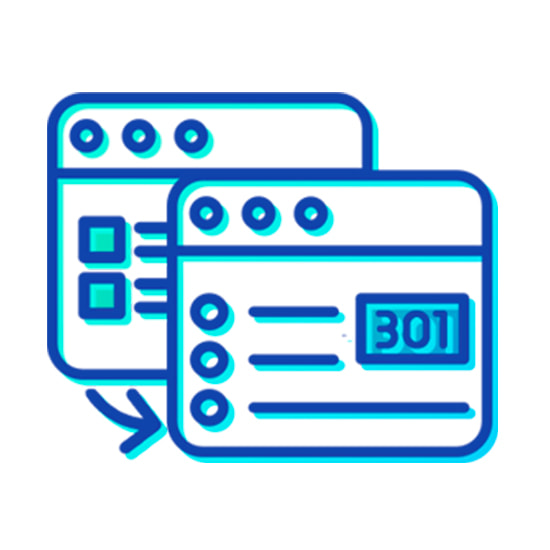
Content writing or Copywriting for the web could be divided into three types, depending on the style and intention of the author:
This is a merely descriptive content, it provides characteristics and objective data of the topic, product or service to which it refers. This writing style is not the best option to achieve conversions in an online shop, but it is accepted to cover informational search intentions.
It is a persuasive copywriting that always describes honestly, without giving orders, without taking present or future situations or moods of the reader for granted, and without using absolute terms unless they are totally true and demonstrable. In our opinion and that of many experts in the field, it is the best way to achieve conversions in an ecommerce, through commercial and transactional keywords.
It is an aggressive writing style, which uses absolutes and takes for granted what the client wants or is convenient for him, gives orders and presents facts without bases, is not sincere and coerces and tries to generate anxiety in the reader. Although this style of writing manages to attract conversions, of course it is a terrible choice for remarketing and the proper functioning of the sales funnel.
Web Performance Optimization (WPO), consists of applying a set of techniques to improve usability metrics (UI), taking into account the different types of devices from which customers can access. The applied web optimization strategies focus on the web loading time, to achieve a minimum loading time and that the elements on the screen fulfill their function, maintaining their position without spontaneous changes.
The WPO is decisive in the Prestashop SEO positioning, the quality controls of search engines to position, reward the best user experience. Search engines are dedicated to measuring things like the loading time of the web and the user's permanence in it. So, the better features and optimization at a technical level, the better positioning potential and better conversion rate.
The type of server on which your online shop is hosted directly influences the loading speed of the site and therefore its ability to improve SEO positioning. In the following link you will find information about our hosting services: Hosting for Prestashop Online Shop.
